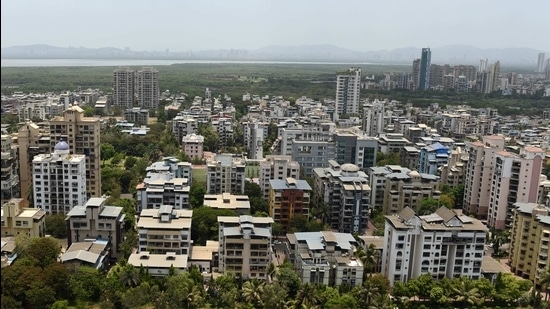Jul 17, 2024 09:08 PM IST
The government of India must assume active leadership in evolving a model of metropolitan governance for the country.
Reports of a Karnataka government proposal to split the Bruhat Bengaluru Mahanagara Palike (BBMP), the municipal corporation of Bengaluru, into five municipal corporations and accept recommendations of the BBMP Restructuring Committee bring the intractable challenge of governing India’s largest cities back into focus. BBMP is among India’s largest municipal corporations, at over 700 sq km.

India had 53 million-plus cities (or urban agglomerations (UAs), defined as a continuous urban spread constituting one or more towns and their adjoining outgrowths). These host 44% of India’s urban population as per the much-outdated Census 2011. India’s largest cities are also among the world’s largest UAs.
Our Constitution — 74th Amendment Act 1993 (74th CAA) — and the state municipal Acts do not imagine a separate model for our large cities at present. There is a passing but inchoate reference to metropolitan areas (envisaged as million-plus cities) and Metropolitan Planning Committees (MPCs) in the 74th CAA. Across 28 states and seven Union Territories (UTs), there are 88 municipal legislations and 44 town and country planning legislations that govern India’s 4,900-plus cities and towns. Of these, 49 legislations cover 149 municipal corporations. While cities such as Chennai, Bengaluru, and Mumbai have their own city-specific Acts, they do not address metropolitan governance and are effectively city-level municipal Acts that govern a part of the city based on municipal boundaries.
Karnataka in 2014 constituted a committee to restructure the BBMP and now, it has proposed to move forward with this agenda. This is a positive step. Of course, whether this turns out to be a cynical political move to split the BBMP into smaller municipal corporations in the hope of winning elections to a few of those remains to be seen.
The lack of a metropolitan governance paradigm is impacting India’s ability to leverage agglomeration economies and address environmental sustainability, given neither is neatly contained within municipal boundaries. Citizens too are directly impacted by fragmented, uncoordinated governance across a bevy of bureaucrat-led institutions such as development authorities, transport corporations, water supply, and sewerage boards, besides several state departments.
The spatial fragmentation is acute. According to Census 2011, the Mumbai UA has seven urban local bodies (ULBs), apart from the Municipal Corporation of Greater Mumbai. The Kolkata UA has a staggering 30 ULBs and 76 census towns (urban areas governed as villages) apart from the Kolkata Municipal Corporation. As observed in Janaagraha’s Annual Survey of India’s City-Systems (ASICS) 2023 report, the 53 UAs of India are haphazardly governed by 200+ ULBs and several other agencies, state departments, and even panchayats. According to an OECD study, metropolitan areas with a metropolitan governance body have a per capita GDP that is, on average, 7% higher than that of metropolitan areas without such a body.
State governments must form metropolitan authorities in megacities, with integration, coordination, and planning functions so that the agglomeration economies can be effectively leveraged. In million-plus cities, mayors and councils must be empowered over funds, functions, and functionaries, with the civic agencies accountable to them. Additionally, MPCs should be made fully functional with due representation of the mayor and the council. The Union government should lead such an effort to evolve a metropolitan governance paradigm, in consensus with state governments. The BBMP Restructuring Committee Report does have the elements of such a paradigm. It recommends having an MPC at the regional level, with the Greater Bengaluru Authority (GBA) modelled on the Greater London Authority. It recommends a three-tier governance framework for Bengaluru with the GBA, municipal corporation, and ward as the three tiers. The GBA is to be headed initially by the chief minister, and, eventually, by a directly elected metropolitan mayor. There is no evidence of cities other than Bengaluru even contemplating such a move. The Delhi experiment of trifurcating and merging back the municipal corporation was poorly thought out and riven by complexity that is unique to Delhi.
Realisation of the imperative to address metropolitan governance is emerging in some quarters. The 15th Finance Commission, for the first time, incentivised a metropolitan approach by allocating ₹38,196 crores to 200+ ULBs constituting 50 UAs (excluding UTs) to address air pollution, water and sanitation in an integrated manner. An important beginning, it needs to be further strengthened by the 16th Finance Commission. The NITI Aayog’s Growth Hub endeavour too should factor in spatial and functional integration and coordination even as it rightfully thinks about economic growth as a key driver of urbanisation. Ultimately, state governments would need to assume leadership in metropolitan governance.
India’s urbanisation needs to be centred on 4E outcomes — Economic growth and job creation; Equitable access to services and opportunities; Environmental sustainability; and democratic Engagement. Balancing these 4Es in the larger cities calls for metropolitan governance that can overcome spatial and functional fragmentation through single-point political accountability. Failure to do so will have real implications in terms of loss of economic productivity and potentially even gradual decay, worsening congestion and air pollution, and exacerbating climate effects like flooding. The government of India must, therefore, assume active leadership in evolving a model of metropolitan governance for the country.
Srikanth Viswanathan is CEO, and VR Vachana is head-municipal law and policy, JanaagrahaCentre for Citizenship and Democracy.The views expressed are personal
Story Saved


